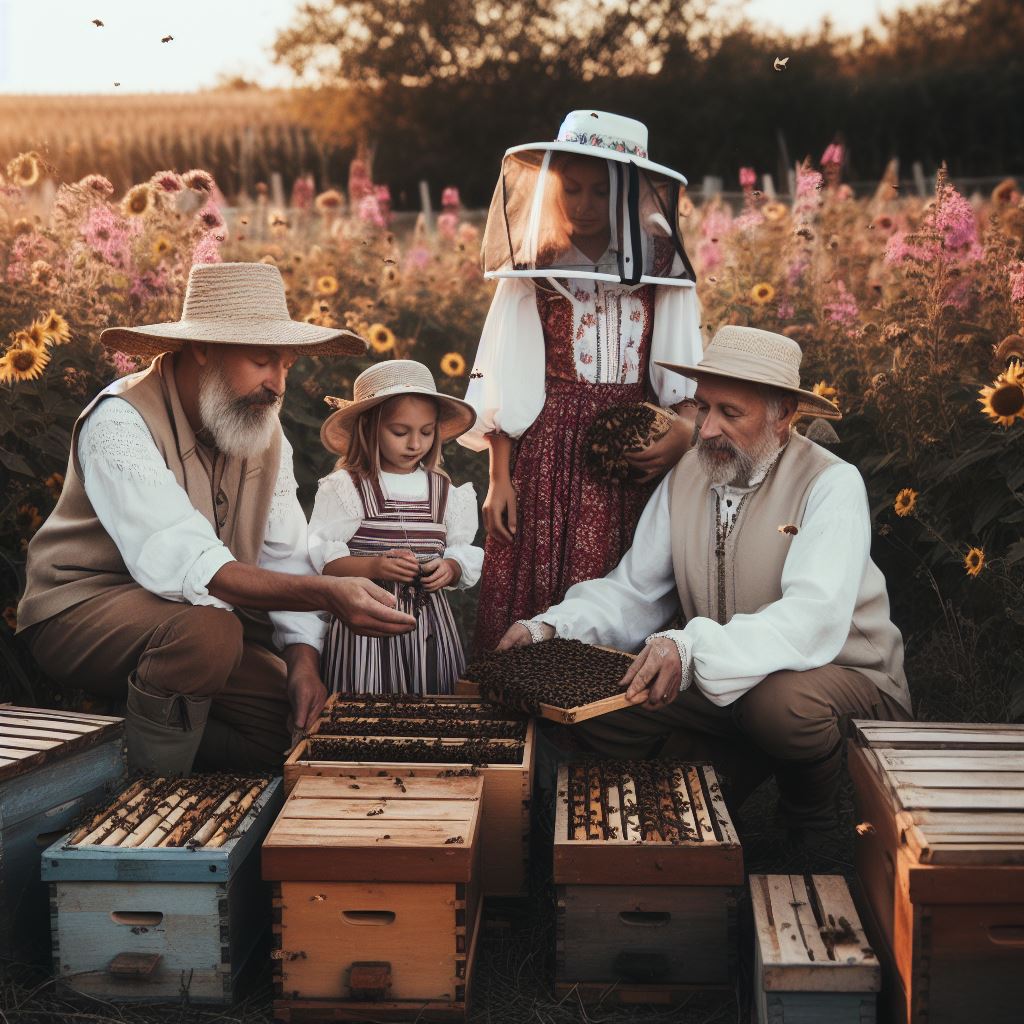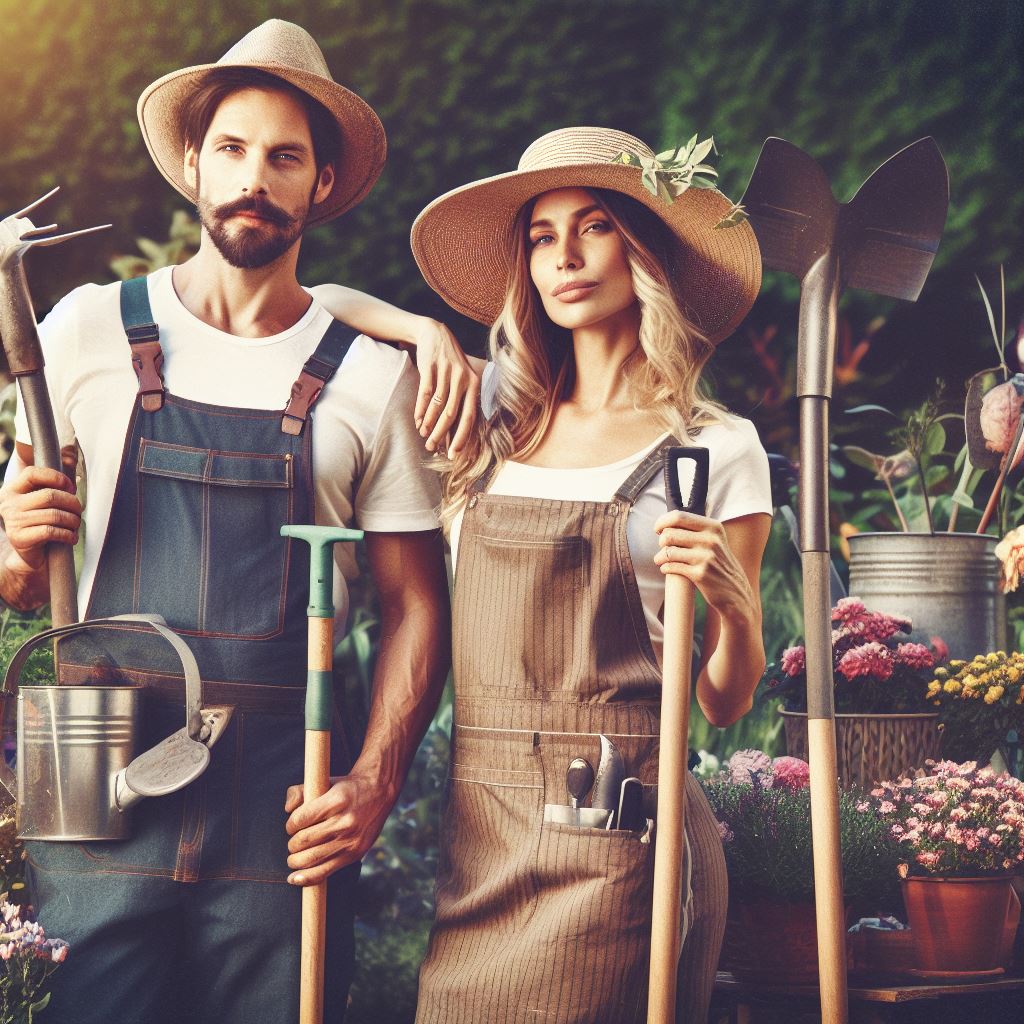Introduction
Maintaining Garden Health Beekeeping is crucial for the overall well-being of your plants and environment.
Bees play a vital role in pollination, ensuring the reproduction and growth of various plant species.
Beekeeping directly contributes to garden health by providing bees with a conducive environment for pollination.
Having a thriving garden not only brings endless joy, but it also benefits our overall well-being.
Maintaining a healthy garden is crucial as it provides a peaceful sanctuary and helps to improve air quality.
A well-kept garden can also increase property value and attract beneficial wildlife.
In the intricate web of garden life, bees are the unsung heroes.
Bees play a vital role in pollination, ensuring the reproduction and growth of various plant species.
Approximately 80% of the world’s plant species rely on pollinators, mostly bees, for fertilization.
Without bees, our gardens would suffer, resulting in reduced flower and fruit production.
Beekeeping directly contributes to garden health.
By keeping bees, you provide them with a safe and consistent habitat, ensuring their survival.
In return, these diligent pollinators enhance your garden’s productivity, resulting in healthier and more plentiful harvests.
The symbiotic relationship between beekeeping and garden health goes beyond increased yields.
As bees move from flower to flower, they transfer pollen, aiding in cross-pollination.
This process leads to genetic diversity and stronger, more resilient plants.
Additionally, bees contribute to the overall diversity of your garden by attracting other beneficial insects, birds, and wildlife.
Transform Your Agribusiness
Unlock your farm's potential with expert advice tailored to your needs. Get actionable steps that drive real results.
Get StartedIn short maintaining a healthy garden goes hand in hand with supporting bee populations through beekeeping.
By providing bees with a suitable habitat, we ensure their pollination services, leading to a vibrant and thriving garden.
So, embrace beekeeping and witness the positive impact it has on your garden’s health.
Benefits of Beekeeping
Increased pollination
- Bees play a crucial role in the pollination process, ensuring the reproduction of plants.
- By visiting flowers for nectar, bees transfer pollen from the male to the female parts of plants, fertilizing them.
Enhanced fruit and vegetable yield
- Several crops benefit greatly from bee pollination, leading to higher yields and improved quality.
- Examples include apples, strawberries, cucumbers, pumpkins, almonds, and blueberries.
- Beekeeping increases bee populations, ensuring a constant supply of pollinators and enhancing harvests.
Beekeeping enhances pollination, ensuring bountiful harvests and increased crop yield in home gardens and farms alike.
The honey produced serves as a natural sweetener, rich in antioxidants, with potential health benefits for consumers.
Maintaining beehives fosters environmental sustainability, supporting biodiversity and contributing to overall ecosystem health.
Beekeeping promotes local economies through the sale of honey and hive-related products, creating sustainable income for beekeepers.
The act of beekeeping itself is a therapeutic and educational hobby, fostering a deeper connection with nature and agricultural practices.
Beeswax harvested from hives finds use in crafting candles, soaps, and cosmetics, providing eco-friendly alternatives to synthetic products.
Investing in beekeeping aligns with conservation efforts, helping combat the global decline in bee populations and supporting a healthier planet.
The benefits of beekeeping extend far beyond honey jars, offering a sweet synergy between agriculture, ecology, and well-being.
Read: Sustainable Practices for Small Farms
Bee-friendly Garden Design
Selection of bee-attracting plants
- Flowering plants that attract bees.
- Importance of providing a variety of flowers
Avoidance of chemical use
- Harmful effects of pesticides on bees.
- Organic alternatives for pest control.
Providing water sources for bees
- Importance of clean water for bees.
- Setting up bee-friendly water stations.
Choose native plants rich in nectar and pollen.
Opt for a variety of colors to attract different bee species. Plant in clusters to create bee-friendly zones, maximizing foraging efficiency.
Include flowering herbs like lavender and mint, offering bees both food and shelter.
Avoid pesticides and herbicides to maintain a healthy environment for bees.
Provide a water source, like a shallow bird bath, for bees to stay hydrated.
Create bee nesting spots using hollow stems or bee houses.
Embrace organic gardening practices, fostering a chemical-free haven for bees.
Regularly assess your garden’s bee activity and make adjustments for continuous bee attraction.
With thoughtful planning, your garden can flourish, becoming a haven for these essential pollinators.
Read: Farm-to-Table: Growing Your Own Food
Uncover the Details: Small-Scale Farming: Essential Machinery
Delve into the Subject: Gardening in Drought: Survival Tips
Showcase Your Farming Business
Publish your professional farming services profile on our blog for a one-time fee of $200 and reach a dedicated audience of farmers and agribusiness owners.
Publish Your ProfileGetting Started with Beekeeping
Starting a successful beekeeping venture requires preparation, knowledge, and the right equipment.
Whether you are an experienced gardener or a beginner looking to enhance your garden’s health, beekeeping can be a rewarding and beneficial practice.
By understanding bee behavior, obtaining the necessary equipment, and obtaining bees, you will be on your way to establishing a thriving apiary.
Research and education
To ensure the well-being of your bees, it is crucial to understand their behavior and requirements.
Bees are social insects that follow a hierarchical structure within their colonies.
Learning about their communication methods, foraging habits, and reproduction processes will help you provide the optimal environment for their development.
To gain knowledge about beekeeping, it is recommended to explore various reading materials and online resources.
Books such as “The Beekeeper’s Handbook” by Diana Sammataro and Alphonse Avitabile and “Beekeeping for Dummies” by Howland Blackiston offer detailed guidance for beginners.
Online platforms such as beekeeping associations’ websites, forums, and YouTube channels provide valuable insights and practical demonstrations.
Beekeeping equipment
Choosing the right beekeeping equipment is crucial for effectively managing your bees and maintaining a healthy hive.
There are various hive types and components available, including Langstroth, top-bar, and Warre hives.
Consider factors such as ease of use, cost, and compatibility with local regulations when selecting your hive.
Essential tools for beekeeping include protective gear, hive tools, and a smoker.
Protective gear, such as a bee suit, gloves, and a veil, shields you from potential stings.
Hive tools, like a hive tool or a scraper, are used for separating hive components and inspecting the hive.
A smoker generates smoke that helps calm the bees during inspections, making them less likely to sting.
Obtaining bees
To start your beekeeping journey, you need bees.
There are multiple ways to obtain bees, depending on your preference and availability.
One option is to buy bee colonies or packages from reputable suppliers.
These packages usually include a queen and a certain number of worker bees.
This method allows you to establish a colony quickly and efficiently.
Alternatively, you can catch or attract swarms, which are groups of bees that have left their original colony to create a new one.
Swarms can be found in trees, buildings, or other sheltered areas.
Catching swarms requires specific skills and equipment, such as a swarm-catching box or a bee vacuum.
Swarms offer an opportunity to expand your apiary with bees that are acclimated to the local environment.
In essence, getting started with beekeeping involves conducting research, educating yourself about bee behavior, acquiring the necessary equipment, and obtaining bees.
By studying their behavior, you can create an environment that promotes their well-being.
Choosing the appropriate hive type and tools will aid in efficiently managing your bees.
Whether you decide to purchase colonies or catch swarms, obtaining bees is an essential step towards setting up your successful beekeeping venture.
Read: Heirloom vs. Hybrid: What’s Best for You?

Gain More Insights: Vertical Herb Gardens: Maximize Your Space
Maintaining Healthy Bee Colonies
Bee colonies are the heart and soul of a productive and thriving garden.
To ensure the health and vitality of your bee colonies, it is essential to practice proper colony management techniques.
This Section will cover three fundamental aspects of maintaining healthy bee colonies- regular inspections, proper feeding and nutrition, and hive maintenance and cleanliness.
Regular inspections
Regular inspections of your bee colonies are crucial for early detection and prevention of potential issues.
Monitoring bee health allows you to address problems promptly, ensuring the longevity of your colonies.
During inspections, you should pay attention to the following:
Importance of monitoring bee health
By monitoring bee health, you can identify signs of illnesses, determine the overall vigor of the colony, and take necessary steps to prevent disease outbreaks and colony losses.
Regular inspections enable you to be proactive in your beekeeping practices.
Signs of common bee diseases and pests
Familiarize yourself with the common signs and symptoms of bee diseases and pests.
Showcase Your Farming Business
Publish your professional farming services profile on our blog for a one-time fee of $200 and reach a dedicated audience of farmers and agribusiness owners.
Publish Your ProfileInspect for issues such as abnormal brood patterns, deformed wings, presence of mites, signs of foulbrood, or excessive dead bees.
Early detection is key to implementing effective treatment plans.
Proper feeding and nutrition
Bees require a diverse and nutrient-rich diet to thrive. It is essential to provide them with ample food sources throughout the year.
Providing pollen and nectar sources
Plant a variety of flowers and flowering plants that offer abundant pollen and nectar.
This ensures a balanced diet for your bees and promotes healthy brood development and honey production.
Supplementation with sugar syrup or pollen patties
In times when natural food sources are limited, supplementing their diet with sugar syrup or pollen patties becomes necessary.
Sugar syrup provides carbohydrates, while pollen patties offer additional protein.
Both support the bees’ overall nutritional requirements.
Hive maintenance and cleanliness
Clean and well-maintained hives contribute to bee health and productivity.
Proper hive maintenance ensures bees have a hygienic living environment.
Regularly cleaning hives and removing debris
Regularly clean your hives, removing dead bees, wax scraps, and other debris.
This prevents the buildup of pathogens and pests that can weaken the colonies and hinder their productivity.
Preventing common hive issues
Take preventive measures to address common hive issues.
Implement strategies to control and manage varroa mites, wax moths, and other pests.
Ensure adequate ventilation to prevent the accumulation of moisture and the growth of mold.
By practicing regular inspections, providing proper nutrition, and maintaining a clean hive environment, you are taking proactive steps to promote the health and well-being of your bee colonies.
Healthy colonies translate to increased pollination rates, greater honey yields, and a thriving garden ecosystem.
Read: Herbs & Spices: Growing Your Flavor Garden
Conclusion
Recap of the benefits of beekeeping for garden health
Beekeeping is a valuable practice for boosting the health of our gardens.
Bees play a crucial role in pollination, leading to increased yields and better quality produce.
Additionally, they contribute to a diverse ecosystem, supporting the survival of other wildlife.
Encouragement to start beekeeping
If you haven’t considered beekeeping yet, now is the time to start.
Not only will it benefit your garden, but it is also a rewarding and educational hobby.
You can join beekeeping clubs or take courses to learn more about this fascinating endeavor.
Final thoughts on the symbiotic relationship between bees and gardens.
The relationship between bees and gardens is truly symbiotic.
Bees benefit from the abundance of flowers and sources of nectar while gardens thrive from the pollination services provided by bees.
It is a mutually beneficial partnership that supports the health and well-being of both bees and gardens.
Remember, as gardeners, we have the power to make a positive impact on the environment.
By incorporating beekeeping into our gardening practices, we can contribute to the conservation of bees and protect the future of our gardens.
Together, let’s create thriving and vibrant spaces that benefit both nature and ourselves.




